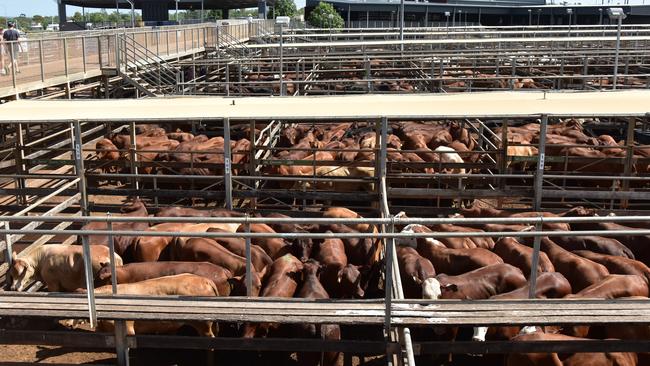Livestock producer incomes have dropped following El Nino sell-off
El Nino forecasts last year sent a scare through the cattle and sheep industries, prompting kneejerk a sell-off. Incomes still haven’t recovered.

Shockwaves sent through cattle and sheep markets by fears of El Nino and drought have sent livestock producer incomes plummeting in the past 18 months.
From record highs two years ago, farm incomes for specialist cattle and sheep farmers have plunged well below the 10-year average. New data released by the Australian Bureau of Agricultural and Resource Economics and Sciences shows sheep producer incomes fell 125 per cent in 2023-24, while beef producer incomes fell by 66 per cent.
The reduced income was despite the mass sell-off of cattle and sheep from eastern producers preparing for drought, despite most eastern states experiencing above normal rainfall over summer. Average cash income for specialist beef farms fell to $65,000 a farm last financial year, 60 per cent below the 10-year average. Sheep producers fared worse, with average income falling to a loss of $23,000, below the average of $128,000.
Central Queensland grazier Adam Coffey said the downturn in cattle markets, which had been exacerbated by producers selling out of fear of drought, had been noticeable but was part of the cycle of farming.
“It was highly probable that we’re going to have those sort of figures coming off the record highs,” Mr Coffey said. “It’s probably been a bit of a perfect storm in terms of the sharp drop-off in prices we were receiving and then also all the factors around the inflationary factors and interest rates.”
Mr Coffey said producers were conscious that the peak in cattle prices two years ago would eventually fall and had made the most of the good times to prepare.
“Every producer hopes high prices are there … to stay,” he said. “But really for us and I think a lot of others that I know it was probably about investing in the productivity of your business.
“We put a fair bit into pasture improvement, further paddocks subdivision, water reticulation, which ultimately allows us to run more numbers and builds resilience so that we can we can cruise through the seasonal variability a lot better.”

Mr Coffey said global factors, such as rebuilding of the US cattle herd, reducing the supply of premium beef on the market, had improved confidence among farmers.
“I think we’re all aware of that knee-jerk reaction some took to the sort of pessimistic forecasts around 12 to 18 months ago from the weather bureau; that certainly didn’t help things. But at the moment there’s is a feeling of positivity around in terms of US markets.”
ANZ head of food, beverage and agribusiness insights Michael Whitehead said confidence in the sector remained high and the cyclic nature of the cattle industry meant lenders’ attitudes towards the sector had remained unchanged, despite the downturn.
“Industry participants, including financiers need to look through the cycles and take a long-term view,” he said.
“Some stability is emerging in cattle prices, and while well off the highs of a few years ago, they have also bounced off the lows felt last year where the EYCI fell below 350c to now sit around 600c.”




To join the conversation, please log in. Don't have an account? Register
Join the conversation, you are commenting as Logout